Is stainless steel or ceramic better for pets

Ceramic VS. Stainless Steel Pet Bowls
Ceramic VS. Stainless Steel Pet Bowls
Selecting the right feeding bowl for your pet can be a difficult decision with so many different shapes, sizes, and materials to choose from. In this article we will explore the differences between stainless steel and ceramic pet bowls.
Ceramic
When it comes to pet feeding bowls, ceramic bowls are a popular choice. Ceramics are widely available, come in a variety of styles, and can even be customized with your pets name and other designs. While these bowls can be beautifully designed and esthetically pleasing, there are a few reasons why ceramic bowls are not considered the best option when selecting a bowl for your pet.
Ceramic bowls are often finished with a thin layer of paint glaze that protects and seals the underlying bowl. If youre going to purchase a ceramic dog bowl, make sure that they are labeled as "Food Safe" or "Lead Free," this will ensure that your pets bowl is free from lead and other harmful chemicals. Another reason why ceramic bowls are not considered as the safest option for pets is they can easily chip or break if dropped. Ceramics are known to be much heavier than other options and can create shards, chips, and sharp edges if they accidentally slip off a countertop. An additional danger associated with ceramic bowls is the material itself. Ceramics contain microscopic holes and crevices that can harbor bacteria and fungus. Thoroughly washing your ceramic bowls will only do so much as the bowls tiny edges, holes, and micro cracks will still allow for microscopic organisms to flourish.
Stainless Steel
When it comes to selecting a feeding bowl for your dog or cat, stainless steel is hard to beat. Stainless steel can survive exposure to high temperatures, doesnt easily scratch or dent, and will not rust. Complementing its durability, stainless steel bowls are lightweight and will easily survive an accidental drop from a countertop. Besides being extremely durable, stainless steel provides a variety of health benefits.
Unlike ceramic bowls, stainless steel is non-porous and does not contain microscopic cavities, edges, or cracks. The absence of these microscopic imperfections means that there are no places for bacteria and fungus to form. Cleaning stainless steel bowls after use will eliminate any micro-organisms and keep your pets healthy and safe. While stainless steel is the most recommended choice of material for pet bowls, not all forms of stainless steel are created equal. The WeatherTech Pet Feeding Systemfeatures the only pet bowlstested to human food grade standards and are certified by the NSF to be free of lead, radiation, mercury, cadmium and other toxins.
Stainless Steel vs Ceramic Dog Bowls: Which Is Right for Your Needs?
A good dog bowl is an essential purchase when you own a pet. Size and shape can vary, but each pet will need a place to eat. However, some materials like plastic can leak harmful chemicals into the food and scratch easily, allowing bacteria to form and grow. Some metals can rust, which will ruin the bowl and add iron oxide to the food. Stainless steel and ceramic are also popular materials often used to make dog bowls, and we are going to look at each to see which one is better. Keep reading to make sure you get the best food bowl for your pet.

Overview of Stainless Steel Dog Bowls
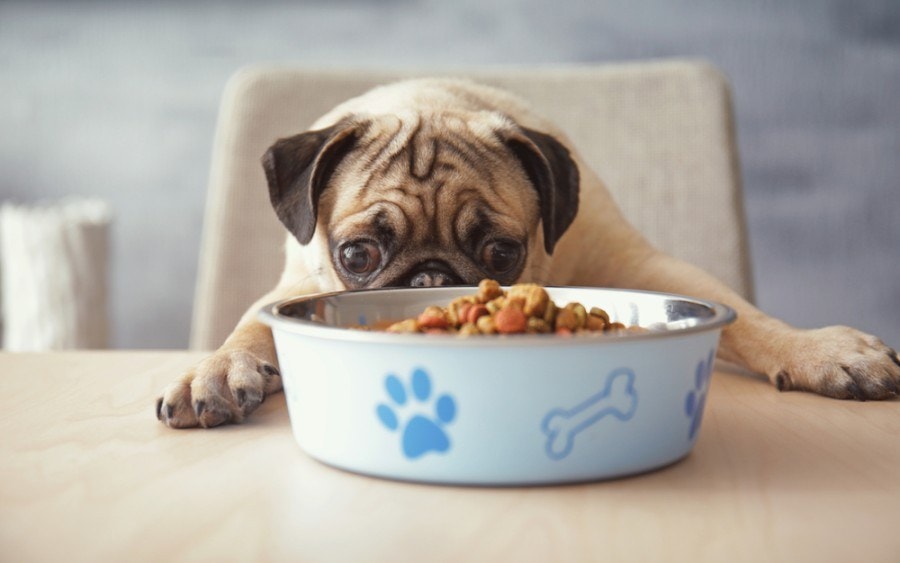
What is stainless steel?
Stainless steel is an iron alloy made by mixing iron with carbon, nitrogen, aluminum, silicon, nickel, and more to give it a wide variety of properties. It must contain at least 11% chromium to be stainless steel, and this ingredient prevents it from rusting and also allows it to be more heat resistant. Adding more chromium or nickel will increase its rust resistance. Since the stainless steel does not rust or scratch easily, it makes an excellent dog bowl.
The only real downside to stainless steel is that it doesnt hold paint well, so its usually not very fancy unless its in a larger base plastic base.
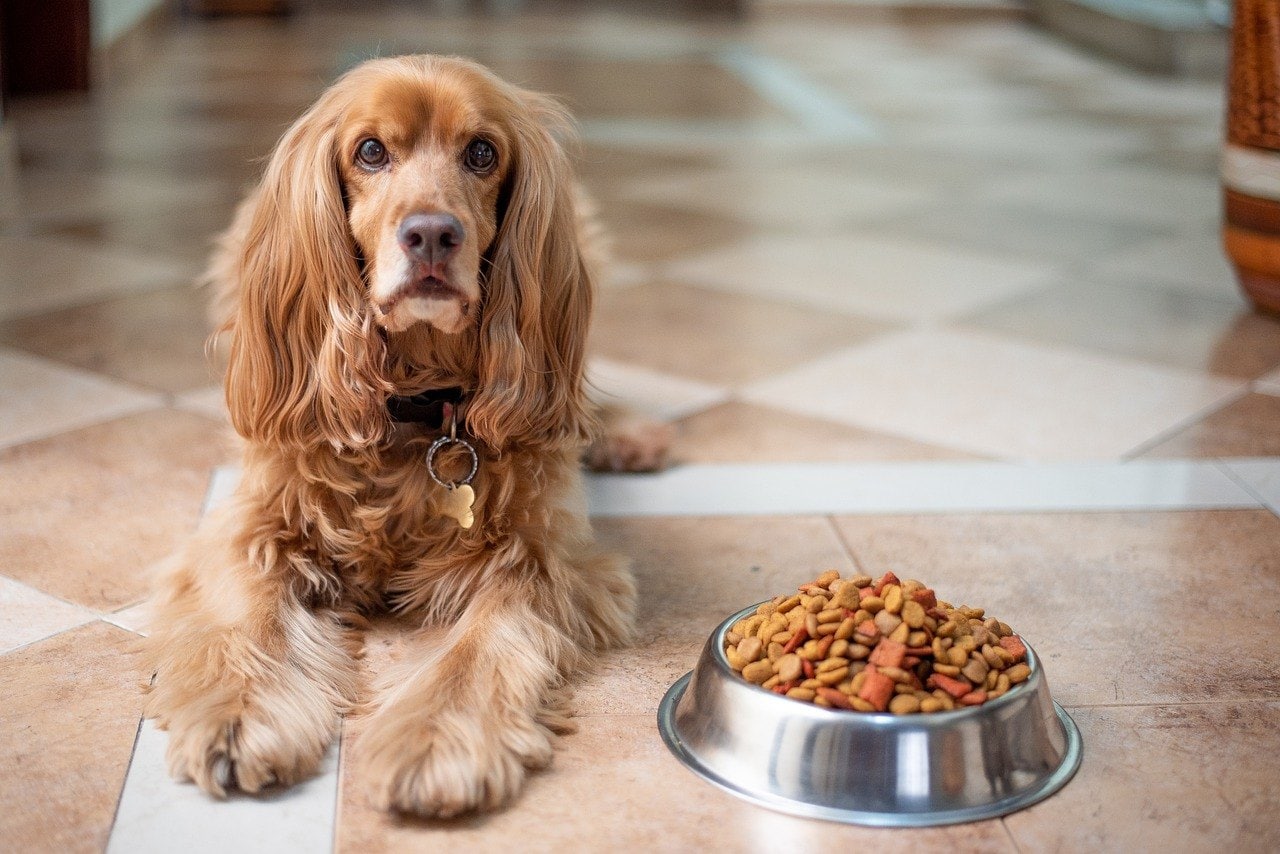
When do I use stainless steel?
Stainless steel makes a great choice as a dog bowl, and there are very few downsides. As we mentioned, it does not rust, so its suitable for indoor and outdoor pets. It wont add any chemicals to the water or change the flavor, and it wont scratch, so bacteria cant grow on the surface. Its also nearly indestructible and will likely last several years.
Pros
- Durable
- Bacteria resistant
- Easy to clean

Overview of Ceramic Dog Bowls
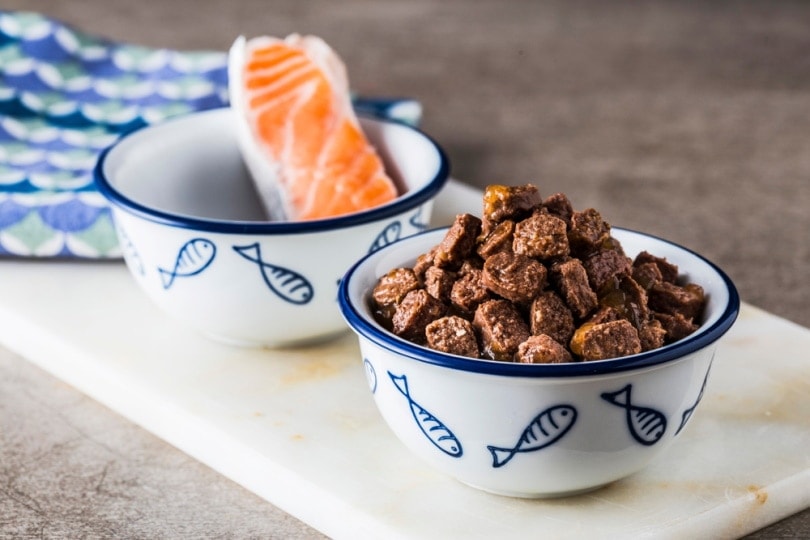
What is ceramic?
Ceramic pottery is a baked clay that becomes very hard when exposed to high temperatures. People may also refer to this material as earthenware, stoneware, or porcelain. Many home dishes use a similar material and many toilets, as well as vases and statues. The hard surface can be very smooth and resistant to scratching, so, like stainless steel, its easy to clean and will not allow bacteria to grow. It will not leak any chemicals into the food, nor will it change the flavor.
The primary downside to ceramics is that its hardness makes it brittle, so its easily broken by handling them roughly or dropping them.
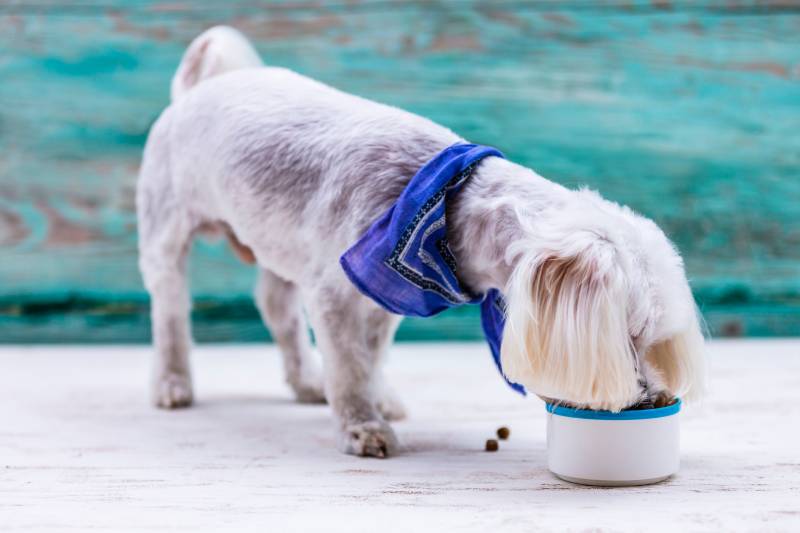
When do I use ceramic?
Ceramic dog bowls make an excellent choice for most homes, and due to their heaviness, they are especially useful for dogs that like to push the food bowl around while they eat. These bowls are often highly decorated, and there are plenty of patterns and colors to choose from, so you are sure to find one that accents your kitchen. There is no worry about rusting, and it will last a lifetime if you dont drop it.
The downside to ceramic is its brittleness, which makes it easy to break or crack. The decorative coating also tends to ship off after repeated washings, decreasing its attractiveness. The decorative colors and patterns can also increase the bowls cost, and its weight can increase the price of shipping it to your home.
Pros
- Hard surface
- Decorative appearance
- Easy to clean
- Reduces sliding
When to Use Stainless Steel
- Main dog bowl
- Secondary dog bowl
- Less expensive
- More durable
When to Use Ceramic
- Main dog bowl
- Secondary dog bowl
- Pets that push the bowl
- More attractive
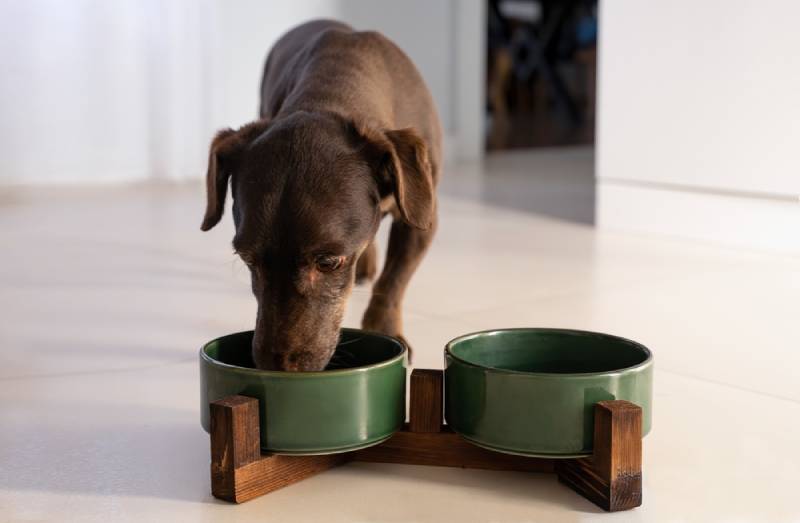

Conclusion
We recommend the stainless steel dog bowl for most people because its easy to clean and nearly indestructible. Its lightweight, inexpensive and suitable for indoor and outdoor use. You are also more likely to find one at your local store that you are a ceramic bowl. Its not that we dont like ceramic bowls. Ceramic is also great, and many people will prefer them, but they require a little more care than you dont handle them roughly, and they are not as easy to find and tend to be more expensive. However, if you have just redesigned your kitchen to be color-coordinated, the ceramic bowl is likely what you need.
We hope you have enjoyed looking over these popular materials to make dog bowls and have decided what type you would like to use. If we have helped your pet have a happier mealtime, please share this look at stainless steel and ceramic dog bowls on Facebook and Twitter.
Are Stainless Steel or Ceramic Bowls Better for Dogs?
298Mealtime is a dogs daily priority. And our pets rely on us to keep their world safe. Thats why were looking into stainless steel vs. ceramic dog bowls to determine which is better for dogs. In this article, we look at the different materials and learn which are safe or harmful.
Lets get into it!
How Do You Determine Which Food and Water Bowls Are Right for Your Dog?
The first step to determining the right food and water bowls for your dog is knowing their consumption. Your vet can instruct you on how much food your dog needs daily based on its size, age, and any other health factors that may pertain to your pup. For example, a nine-pound toy breed may only need a half cup of food a day, whereas a 55-pound labrador retriever is going to require a lot more. So, the small dog can have a smaller food bowl.
Water consumption is also likely to vary depending on the dogs size. And keeping your pup hydrated is crucial. Replenishing a water bowl, regardless of size, throughout the day is ideal for keeping it fresh and full. But if youre gone for the day, we recommend a large water bowl to ensure your dog doesnt run out.

No-spill water bowls are also something to consider. Larger dogs, especially, are known for moving their bowls around simply due to the size of their snout. If your pup is prone to tipping over bowls, a no-spill and non-slip bowl is the perfect solution.
The materials that food and water bowls are made of are another important factor in determining the right ones for your dog. After all, your pup is touching the bowl with its mouth and tongue multiple times a day, often very vigorously. So, you want to ensure anything in its mouth is non-toxic.
There are various options on the market, and stainless steel and ceramic bowls are the most popular. Lets take a close look at each.
What Is Stainless Steel?
Stainless steel is a corrosion and rust-resistant material. It contains at least 10.5 percent chromium, less than 1.2 percent carbon, iron, and other elements such as nickel, titanium, niobium, manganese, and molybdenum. Stainless steel is also easy to clean with soap and detergents because they dont damage the surface, making it ideal for food bowls and water bottles. In addition, it can withhold nearly any temperature.

What Are the Benefits of Stainless Steel Dog Bowls?
The benefits of stainless steel dog bowls include non-toxicity, ease of cleaning, and they can keep water cool. Since theyre rust-resistant, a stainless steel bowl is at low risk of harming your dog with any toxic materials. And since it doesnt scratch, it cant hold any bacteria for your dog to ingest. Its also easy to clean and can last several years.
What Are the Disadvantages of Stainless Steel Dog Bowls?
There really arent any disadvantages to stainless steel dog bowls. However, from a decor perspective, they are simply silver, steel-looking. So, theres not a particularly charming factor, although they match nearly any home decor. But you could use something like a bamboo feeder stand to give your dogs feeding station some style and practicality.
What Are Ceramic Bowls Made Of?
Ceramic bowls are made from clay. Theyve been a part of civilization for centuries. Clay is heated around 1,000 degrees Fahrenheit, removing the molecular water, to become pottery or earthenware. Ceramic bowls can also be painted. The materials of the paint vary depending on whats used.

Are Ceramic Bowls Safe for Dogs?
Ceramic bowls are generally safe for dogs if properly constructed and glazed. If not correctly applied, theres a rare risk of lead poisoning from glazes or decorative paints.
In addition, ceramic bowls can break easily. If your dog tips the bowl over or moves it around the room, the brittleness of the earthenware likely wont last very long. So, you want to be cautious so that if the bowl breaks, your pet doesnt accidentally ingest a piece or get injured by a sharp edge.
What Are the Benefits of Ceramic Dog Bowls?
The benefits of ceramic dog bowls include the ability to find them in various colors and patterns, and theyre also easy to clean. Since ceramics can be painted, you can get them with cute dog patterns or color schemes that match your home decor. The bowls are also easy to clean and dont harbor bacteria, making them a healthy choice for your pet.
What Other Types of Dog Bowls Are Available?
There are several other types of dog bowls on the market. Youll find plastic, glass, silicone, and aluminum among them. And there are travel bowls made out of canvas-type materials.
Choosing a bowl your dog will eat and drink out isnt just about the look or price. We encourage you to think through the health implications.

If the bowl has unsafe materials, such as BPA or lead, the possible health problems become obvious. But there are also issues with easily scratched bowls, for example. Bacteria can build up in even the tiniest scratches and potentially create germs like E. coli and salmonella. Or if a glass or plastic bowl is chipped, your pet could consume the piece and start choking or have intestinal blockage.
So, while other types of dog bowls are available, we recommend leaning toward stainless steel bowls. Or ceramic as a second choice.
Did you know? Like humans, cats prefer chilly water for drinking.

Which Type of Dog Bowl Is Better: Ceramic vs Stainless Steel?
As weve pointed out, both ceramic and stainless steel dog bowls have pros and cons. But, overall, stainless steel is the safest choice.
Since stainless steel bowls are corrosion, rust, and scratch-resistant, they pose no health risk to pets or humans. The only real downside to the bowls is that theyre lightweight, making it possible for a dog to tip over or move. However, no-spill options with non-slip pads on the bottom of the bowl can take care of that problem.
Ceramic dog bowls, in contrast, are heavier and breakable. They also have potential health implications if theyre not appropriately glazed and therefore arent lead-free. And ceramic bowls are typically more expensive to replace than stainless steel.
Pro Tip: If your dog is sick for no apparent reason, it may have a food sensitivity issue. Consider testing for food intolerance.
4 Best Stainless Steel Dog Bowls
Now that weve come to a conclusion in our stainless steel vs. ceramic dog bowls debate lets shop! Here are four of the best stainless steel dog bowls on the market.
1. Coldest Dog Bowl Stainless Steel Non Slip No Spill
Coldests stainless steel dog bowl is a non-slip, no-spill product. We love it because the inside is a triple wall insulated stainless steel, and the outside comes in various colors. And it has a bottom grip to prevent spilling. The food-grade safe bowl is easy to clean and dishwasher safe.
2. PEGGY11 Deep Stainless Steel Anti-Slip Dog Bowls
Peggy11 Deep Stainless Steel Anti-Slip Dog Bowls come in various sizes, from holding two cups of food up to 16 cups. The bowls have silicone on the bottom that grips to the floor to protect the floor and prevent spills or movement. Theyre also designed with a wider rim to fit on feeder stands.
3. Van Ness Pets Medium Lightweight Stainless Steel Dog Bowl
The Van Ness Pets lightweight options are basic stainless steel dog bowls. Theyre excellent quality at a low cost. While they lack a slip-proof component, they have a wide rim to fit into feeder stands, preventing spilling.
4. IKITCHEN Dog Bowl for Food and Water, Stainless Steel
IKitchen stainless steel dog bowls are non-skid with a silicone bottom. The bowls are heavy-duty with double wall insulation. They come in 40 and 64 ounces, and the outside of the bowl comes in various colors.
How Often Should Stainless Steel Dog Bowls Be Washed?
Its widely recommended to wash pet bowls after each use. However, we realize thats not always practical for everyone. But keeping stainless steel dog bowls clean is important and easy. You can put them in the dishwasher along with your other dishes and utensils. So, if you can strive for daily washing the food bowl, that will help your dog. Consider it the same as your dinner plate. When is the last time you didnt clean your dinner plate and ate off it two days in a row?
Keep Your Dogs Meals Safe with the Right Bowl
Keeping your dog healthy starts with mealtime. And the right bowl makes all the difference. Food and water are a significant part of your pets well-being and survival. So, ensuring its safe for them is essential.
Do you use a stainless steel dog bowl? Share your pets food station setup in the comments below.
Stay Informed Join the HypePets Community!
If youre like us, your pets are like family. Stay up to date on the latest news, info, tips, and gear to help your pet live its best life!
Also, join the conversation over on our HypePets Discord server!









